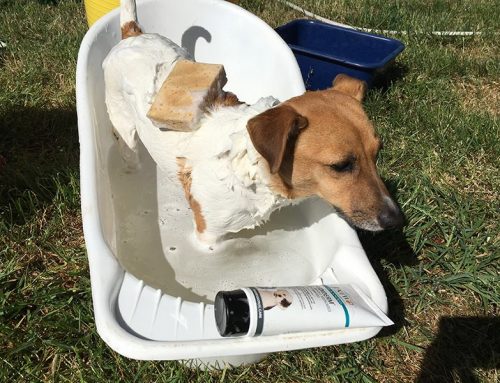Do you know how to manage noise phobias in pets?
Noise phobia is relatively common in both dogs and cats and can be very distressing for both the pets and their owners. In the wild, these loud noises are associated with danger and the animal’s instinct will be to run and hide.

A variety of noises such as thunderstorms, fireworks, vacuums, construction sounds, cars back firing, soda stream fillers, garbage trunk loading, babies crying or gunshots can evoke a dog’s or cat’s noise anxiety. This is because their hearing is so much more sensitive than human hearing. Often they are able to sense the change in barometric pressure long before a thunderstorm hits and detect higher frequency sounds than we can. Visuals, smells, and even electrostatic changes can become associated with these noises increasingly and will further aggravate the condition.
 Not all dogs and cats react to these startling noises the same way. Some pet dogs and cats express hyper-vigilance while others are more timid and may hide in fear.
Not all dogs and cats react to these startling noises the same way. Some pet dogs and cats express hyper-vigilance while others are more timid and may hide in fear.
It’s important to understand the difference between the normal fear your pet expresses, and fear that has become pathologic. When fear becomes pathologic, your pet may generalise every loud sound as a danger. This will cause build up of anxiety and an increase in stress hormones, called cortisol, in the body. Imagine your pet in a permanent state of ‘flight response’ and full of adrenaline. This will pose potential danger to your pet!
Some signs displayed by a noise phobic pet may include excessive panting and/or salivation, vocalisation, uncontrolled urination or defecation, trembling and pacing or freezing in a spot, destructive behaviours, hiding or escape. We have seen cases where a three year old Border Collie patient jumped through a glass and cut his tendons! Another was a 12 month old Spoodle that ran away, was hit by a car and presented with a broken leg. We’ve even had a cat patient who flew over a metal fence and got his leg caught, which torn his knee cruciate ligament. These are situations which we want to prevent!
 Treating this phobia early is crucial, as every cycle of fear will embed in the pet’s behaviour and worsen next time. Treatment can involve a combination of behavioural modification, desensitisation therapy and anti- anxiety drug medications. It is important to socialise and expose your pet, while they are a puppy or kitten, to the noises and their surroundings. Desensitisation involves using pre-recorded loud noises played at progressively higher volumes over a few weeks while your dog is relaxed or eating. If your pet reacts, you need to take it back a step to a much lower volume and increase more gradually.
Treating this phobia early is crucial, as every cycle of fear will embed in the pet’s behaviour and worsen next time. Treatment can involve a combination of behavioural modification, desensitisation therapy and anti- anxiety drug medications. It is important to socialise and expose your pet, while they are a puppy or kitten, to the noises and their surroundings. Desensitisation involves using pre-recorded loud noises played at progressively higher volumes over a few weeks while your dog is relaxed or eating. If your pet reacts, you need to take it back a step to a much lower volume and increase more gradually.
There are several products available to help our pets through these stressful events:
- A ‘thunder shirt’ to wear on your pet’s body before a known stressful event occurs. It wraps around the body to give comfort and may especially help with the static electricity component in thunderstorms.
- Canine Adaptil collar to wear around your dog’s neck. It has synthetic canine pheromones designed to calm your dog and slow releases them using your dog’s body heat over a month per collar.
- Feliway is a synthetic feline pheromones for cats. It is available as a spray or plug into an electrical socket to constantly diffuse the pheromones.
What you can do in the event is allow your pet near you and indoors, but do not excessively calm your pet. They cannot tell the difference between your concern for them and being scared yourself. If they run into their crate, you can use a big blanket to cover the crate to create a dark safe environment for them. You can also minimise visual fear by closing your curtains, so lightning or firework flashes do not scare them.
In pets with severe noise phobias, medications are often essential to break their fear cycle until behavioural modifications and desensitisation therapy have begun to take effect. Anti- anxiety medications may be given half an hour before the anxious event or thunderstorm is predicted. Some patients response very well to medication immediately, while others may need to be on the medication for a few months to see a response.




